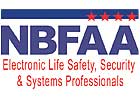
The National Burglar & Fire Alarm Association (NBFAA), during ISC East, announced that the U.S. Department of Labor’s Office of Apprenticeship (OA) has approved NBFAA’s National Guidelines for Apprenticeship Standards for the occupation of Protective Signal Installer (Fire/Life Safety & Electronic Security Installer).
In making the announcement during a press conference, NBFAA president George Gunning toldSDM, “We’ve never had a labor pool for our industry. We just run around stealing each other’s employees.
“Everyone in our industry understands the need to expand the labor pool, to attract the very best technicians, and to provide a mechanism to introduce and train on new products, technologies and applications. We now have that in our Fire/Life Safety and Electronic Security Apprenticeship Program,” Gunning explained.
“This program will provide a foundation of knowledge that allows technicians to advance in their profession and improve the ability of the industry to recruit, train and retain the very best technicians from a competitive labor pool.”
Gunning added, “This accomplishment is represented by a simple certificate indicating the approval of our program, but thousands of people and hundreds of companies have worked for years to make this happen. I believe we have established a new foundation for growth and expansion of our industry and the NBFAA.”
The National Guidelines for Apprenticeship Standards developed by NBFAA were certified by the OA Administrator on Sept. 20, 2006. According to the Labor Department, these standards will now serve as a model for developing local apprenticeship programs registered with the OA or State Apprenticeship Agency/Council for all occupations listed in the guidelines.
The purpose of the National Guideline Standards is to provide policy and guidance to employers, employer associations and their local affiliates in developing Standards of Apprenticeship for local approval and registration.
NBFAA’s apprenticeship program has its roots in a program developed in California. Beginning in 2000 — when a state law mandated that technicians be enrolled in a state-approved apprenticeship program — the California Alarm Association and the California Automatic Fire Alarm Association joined forces to develop a comprehensive and relevant training and education program.
The California program offers traditional classroom training, but the goal from the beginning was to make the related theoretical training available online with a comprehensive distance learning program.
“Now that NBFAA has taken the next step by establishing a federally approved apprenticeship program, our goal will be to work through our National Training School (NTS) and our state chapters to create the administrative and delivery systems to make apprenticeship accessible to technicians in every state. The fundamental components, including curriculum, work experience processes, and defining the responsibilities of the employer, apprentice and program sponsor are already in place,” Gunning said.
According to NBFAA, the key to the national apprenticeship program’s success will be in direct proportion to the support and participation of the companies who make up the industry. Each NBFAA Chartered State Association will have the option to serve as the program sponsor, and the state programs may also be sponsored by a group of companies who organize to offer the apprenticeship program.
For more information, visitwww.alarm.org, or call toll-free (888) 447-1689.

